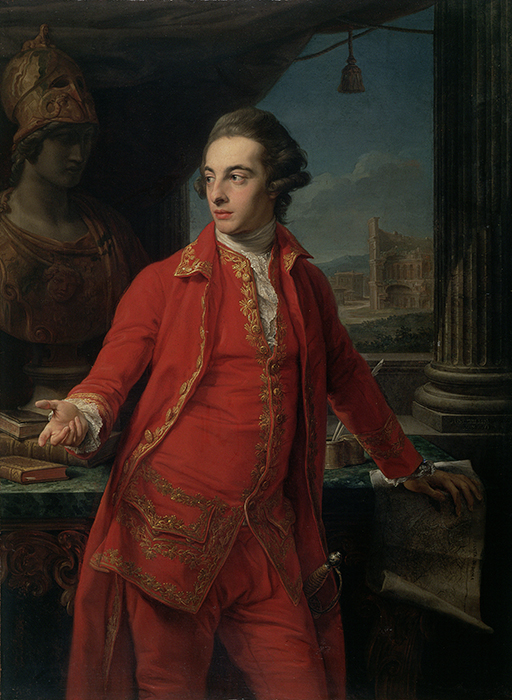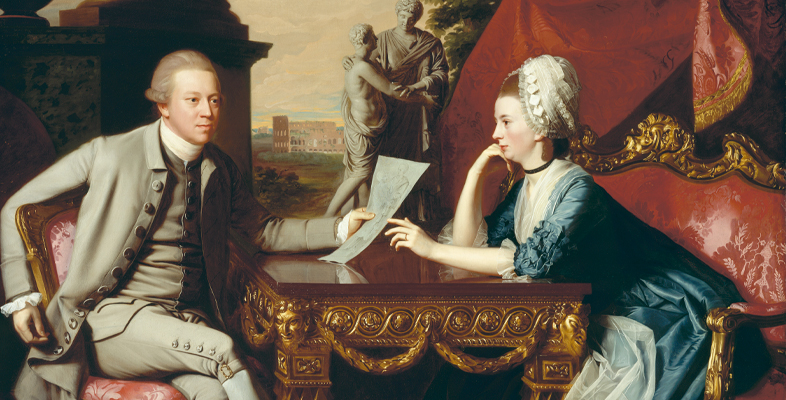2.1 The Grand Tour portrait: people
Pompeo Batoni (1708–1787) was the most successful and fashionable painter of eighteenth-century Grand Tour portraits. One example of his work is the painting he made of Sir Gregory Page-Turner in 1768, when the sitter (the subject of the portrait) was 20 years old (Figure 5). You are going to explore this portrait now.

Activity 4
First, spend a few minutes looking at Figure 5 and jot down any questions that it raises for you about the sitter and how he is portrayed. Think about the figure as well as the accessories and objects around him.
Discussion
You might have wondered where the figure is supposed to be, what the objects are that he is surrounded by, why he is dressed so elaborately, and also why he is turned away and holding his hand out to his right. Keep these questions in mind as you move on.
The questions that emerged as you first looked at this painting can be answered by applying the approaches Art History uses to help us look at paintings. Let’s begin by looking at what is called the painting’s form: that is, the things that make an artwork look as it does to us, the viewers. We usually start with composition, or how the various parts of the painting are organised. Here, the figure is clearly outlined against a background of buildings and objects – some on a table behind him, others representing parts of a building. You will come back to what these are and why they are there in a moment. Returning to composition, there are also particular shapes here – if we think just in terms of horizontals and verticals, the table and what may be part of a ledge or balcony create horizontal lines, while the column on the right and the building in the distance set up vertical lines. These lines seem to almost frame the view of distant buildings. The column on the right also suggests that, in the viewer’s imagination, the painting carries on upwards, beyond the edge of the actual canvas on which the picture is painted, an impression reinforced by the draped material with a tassel hanging down from cords.
Turning to think about the figure, do you think the relative scale of the column and the sculpture of a figure wearing a helmet behind him make him seem smaller than he really is? He is painted in what art historians call a three-quarter (rather than full) length view and slightly turned away. It’s his figure that catches our eye in a pose that has been called a swagger, and although his left hand rests on an unfurling piece of paper his right hand gesture suggests he wants to show us the objects in the painting. His expression doesn’t seem to convey a particular mood, but what it does show is that he is looking out of the painting to his right, the same direction that his right hand is gesturing towards. Colour and light are also important here, as he is painted in an eye-catching embroidered red suit, his face and right side brightly lit in contrast to the paler light on the ruins seen in the distance.
Finally, when thinking about a painting’s form, we consider where the viewer of a work of art is positioned. In this reproduction of the painting we are looking at the painting straight on, but Page-Turner’s gaze and gesture suggest we are positioned towards his right. If we were looking at the painting hanging on a wall, that might be easier to work out as we could move around to look at the portrait from different angles.
